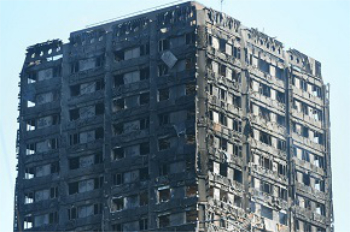Right to contest
In England, in 1800, just 10% of the population lived in towns and cities, now the figure is 90%. England is the third most densely populated major country in the world, and our population is projected to increase from 52 million in 2010 to 62 million in 2035 (ref ONS: Population Projections).
In 2011, a report from the Institute of Public Policy Research warned of a housing black hole, suggesting that there would be a shortfall of 750,000 homes by 2025. (Ref IPPR: England faces 750,000 housing gap by 2025).
This puts our land under considerable pressure for development, and yet our urban areas have vacant sites with hoardings around them, unused buildings with broken windows, closed-down shops, factories and warehouses and car parks sprawling across waste ground.
The government owns over £330 billion of land and property. It is estimated that central and local government hold around 40% of developable sites and around 27% of brownfield land (land which is, or was, occupied by a permanent structure) that are suitable for housing.
Since 2011, the Community Right to Reclaim Land has allowed communities the right to ask that under-used or unused land owned by public bodies was brought back into beneficial use.
On 8 January 2014, the Right to Contest, extended this to allow businesses, local authorities and members of the public, to challenge the government to sell a site. It is intended to facilitate development of publicly-owned sites to boost local growth and to contribute to paying down the deficit.
Sites can be contested simply by filling out a form explaining why the site is potentially surplus and could be put to better economic use.
Where land is owned by a central government department or one of their arms’ length bodies, there is a Right to Contest if:
- The site is potentially surplus or redundant.
- It could be put to better economic use.
- It is in use, but operations could be moved to a different location.
If the department agrees to sell the site, then the case is closed. However, if it sets out reasons to keep a site, Ministers will decide on the best course of action. This should take 6 weeks for simple cases.
Where land is owned by a local authority (or other identified public bodies such as Transport for London, the Metropolitan Police Authority and so on), there is a Right to Contest if:
These cases will be considered by the Department for Communities and Local Government (DCLG).
[edit] Related articles on Designing Buildings Wiki
- Brownfield land.
- Community Right to Reclaim Land.
- Contaminated land.
- Demolition.
- Green belt.
- National planning policy framework.
- Masterplanning.
- Nimbyism.
- Right to regenerate.
- Right to rent.
- Self-build initiative.
- Smart cities.
- The compact sustainable city.
[edit] External references
- Gov.uk, Enough brownfield land released to build 68,000 homes and support 135,000 jobs. 20 February 2014.
- Gov.uk, Right to contest.
- Gov.uk, Community Right to Reclaim Land.
- ONS: Population Projections.
- IPPR: England faces 750,000 housing gap by 2025.
Featured articles and news
ECA Blueprint for Electrification
The 'mosaic of interconnected challenges' and how to deliver the UK’s Transition to Clean Power.
Grenfell Tower Principal Contractor Award notice
Tower repair and maintenance contractor announced as demolition contractor.
Passivhaus social homes benefit from heat pump service
Sixteen new homes designed and built to achieve Passivhaus constructed in Dumfries & Galloway.
CABE Publishes Results of 2025 Building Control Survey
Concern over lack of understanding of how roles have changed since the introduction of the BSA 2022.
British Architectural Sculpture 1851-1951
A rich heritage of decorative and figurative sculpture. Book review.
A programme to tackle the lack of diversity.
Independent Building Control review panel
Five members of the newly established, Grenfell Tower Inquiry recommended, panel appointed.
Welsh Recharging Electrical Skills Charter progresses
ECA progressing on the ‘asks’ of the Recharging Electrical Skills Charter at the Senedd in Wales.
A brief history from 1890s to 2020s.
CIOB and CORBON combine forces
To elevate professional standards in Nigeria’s construction industry.
Amendment to the GB Energy Bill welcomed by ECA
Move prevents nationally-owned energy company from investing in solar panels produced by modern slavery.
Gregor Harvie argues that AI is state-sanctioned theft of IP.
Heat pumps, vehicle chargers and heating appliances must be sold with smart functionality.
Experimental AI housing target help for councils
Experimental AI could help councils meet housing targets by digitising records.
New-style degrees set for reformed ARB accreditation
Following the ARB Tomorrow's Architects competency outcomes for Architects.
BSRIA Occupant Wellbeing survey BOW
Occupant satisfaction and wellbeing tool inc. physical environment, indoor facilities, functionality and accessibility.






















